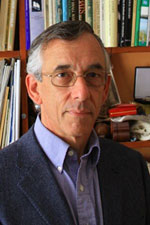After walking out of the World Bank for the last time on Thursday, I determined that I would have two days to detox from the intense admin and frenetic activity of the leaving process before flying home to the UK
I started at the National Museum
From there it was just a short walk to the United States Botanic Gardens below the Capitol. This glorious place doesn’t seem to be on the main tourist route. At the entrance were two lovely slipper orchids from parts of Sumatra I know, displayed in a Wardian Case - the delicate little yellow Paphiopedilum primulinum, and the much larger and rather regal, purple-and-green striped P. tonsum.
I was tempted to venture to the National Zoo but I’ve never really given enough time to the National Museum of Natural History. I had visited briefly a handful of times over lunch but always felt pressured to get back to my desk. Now I had no desk. The exhibition quality here is totally exceptional. The taxidermy is flawless and the exhibits themselves are original and vibrant - wonderful examples would be the two lionesses attacking a buffalo, and the African Elephant bull in the Rotunda, both of which made me feel I was walking around frozen action scenes in The Matrix. If you are able to go, don’t miss the preserved specimen of the Giant Isopod Bathynomus, an enormous relative of the woodlice and pill bugs in the Sant Ocean Hall.
Although I have spent some time in the behind-the-scene stacks of the Snails Section of the Museum, I’d never sought out the public snails exhibit which I assumed would celebrate the diversity, form, beauty and quirkiness of this group. Such a display wasn’t shown on the otherwise useful map and so I enquired at the Information Desk. The helpful gentleman told me "I've never been asked that before" and we concluded there was indeed no snail focus for people to wonder at anywhere in the vast museum. Clearly we have to work on ‘snail consciousness’.
One of the temporary exhibitions was Losing Paradise: Endangered Plants Here and Around the World which explores the beauty and diversity of the world’s endangered plants through forty-five beautiful paintings and other illustrations by members of the American Society of Botanical Artists. It was more than just art however because it tracked how the museum used its collections to predict the conservation status of plants in its collection. One of the paintings which caught my eye, and not just for the delicate artistry, was that of another slipper orchid, the pink and white Paphiopedilum vietnamense from northern Vietnam Vietnam
to
to
In the fascinating David H. Koch Hall of Human Origins was a display of the tiny ‘Hobbit’ or Homo floresiensis which was discovered in a cave on the Indonesian island of Flores
The next day I took off early to drive to the Western Shore of the Chesapeake Bay to revisit the 100-acre Battle Creek Cypress Swamp National Natural Landmark and County Park
After lunch with some dear friends I went to National Cathedral and wandered alone around the vast space above and the intimate crypt and chapels below. The vision of those who built such an enormous and beautiful building open to all and so recently (it opened in 1990) is inspirational. In terms of biodiversity, many types of animals – real and imagined – are carved as gargoyles around the cathedral, some so high that only with binoculars or a telescope can one see them well. If you are doing that, keep an eye open for Darth Vader too.
The stained glass windows of the cathedral are richly coloured and tell stories both spiritual and secular. The magnificent west Rose Window is on the theme of creation. One in the south nave recalls sights of the Lewis and Clark expedition and shows various State Plants and Animals many of which are now threatened by the various progression to the west that the explorers foresaw.
I finished the day by joining Evening Prayer in the Cathedral’s Great Choir, to pray with a grateful heart about the past 16 years - and with trepidation as I enter the future.




